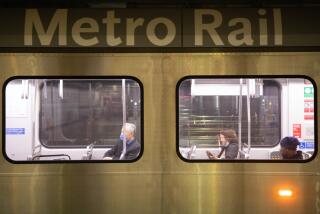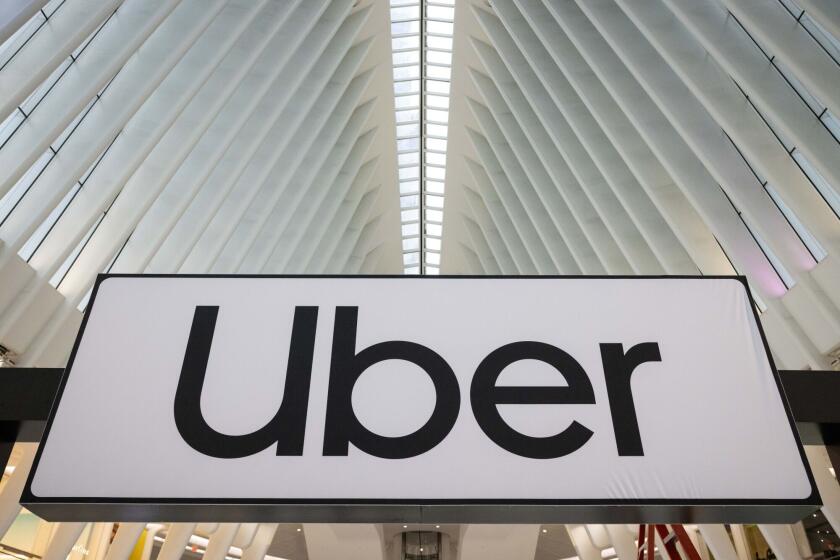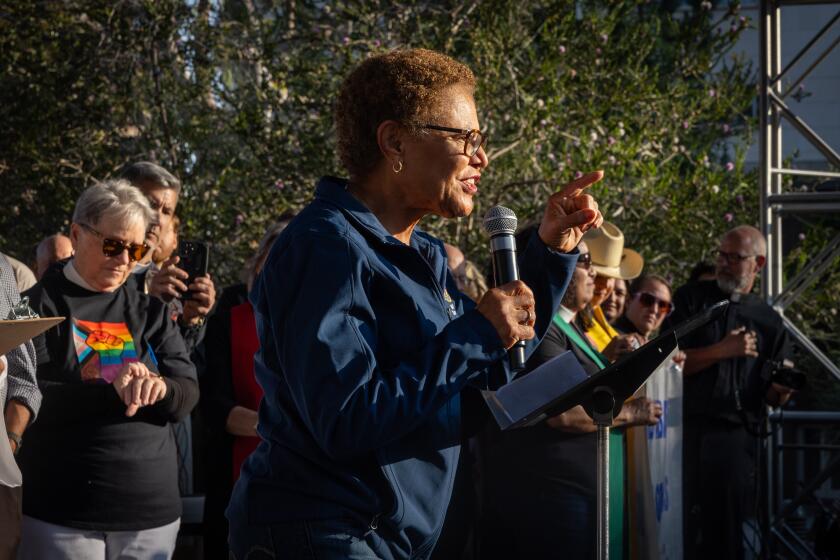Valley Perspective : MTA Approach to Subway Plan Disturbing : The agency needs to remember this is a public project that will affect residents and public parkland.
- Share via
Recent debate about construction of tunnels to connect Metro Rail subway stations in Universal City and Hollywood has raised environmental concerns that the Santa Monica Mountains Conservancy believes will affect park users and residents on both sides of the hill.
In a Times article regarding the Metropolitan Transportation Authority’s tunneling under the Santa Monicas (City Hills Face Critical Tests, Key Questions About Safety, Dec. 21, 1995), MTA construction executive Stanley Phernambucq states that the potential environmental impacts of the tunnels on the flora and water table of Runyon Canyon Park were covered in the MTA’s original environmental impact reports. However, the original 1983 final environmental impact report contains zero analysis of the potential tunneling impacts on Runyon Canyon Park, a Hollywood Hills landmark.
Further, the 1989 Supplemental Environmental Impact Statement / Subsequent Environmental Impact Report, which covered a project more injurious to Runyon Canyon Park, included only 11 sentences and 239 words on Runyon Canyon. The impact assessment of dewatering--removing ground water by pumping--in the mountains is even more scant. The discussion in the reports of dewatering under Runyon Canyon, estimated by the MTA to be about 7 million gallons per day with a 100-foot drop in the water table, totals just 84 words in three sentences.
The lack of public disclosure is disturbing, given that the MTA seemingly ignored what it knew would be significant impacts. In a Dec. 20, 1994, letter to then-MTA Chief Executive Franklin White, MTA contractor John Adams said that “the need for dewatering has been known since 1984” and that “the initial estimated ground-water extraction exceeds current day estimates by five times.” Thus, the MTA has known since as early as 1984 that there would need to be significant dewatering under Runyon Canyon--even to exceed 25 million gallons per day. However, the environmental reports say that “limited dewatering is anticipated,” and in one stroke state, “the Metro Rail Project will avoid potential adverse impacts on urban flora (trees, shrubs, etc.) caused by a lowered water table.”
To date, the only environmental information the MTA has compiled regarding tunneling under Runyon Canyon Park are monthly biological and geohydrological resource surveys. These reports describe only baseline conditions and in no way assess possible impacts of tunneling and dewatering. This fundamental data should have been compiled by the MTA staff from Day 1 and addressed in the reports, long before a tunnel alignment was chosen.
The MTA’s disregard for the concerns of environmentalists, park users and homeowners goes beyond the inadequacies of the original 1983 and 1989 reports. Even new actions by the MTA, such as their recent application to the Regional Water Quality Review Board for an increase in dewatering to a 25 million-gallon-per-day limit, have not been subject to environmental review.
Another issue that the MTA has not adequately addressed is the removal of an 850-foot-deep and 22-foot-wide vent shaft from the Red Line plans. Previously, the MTA steadfastly argued that the shaft was an essential safety feature providing both an emergency escape route for passengers and a ventilation system for the methane exhaust of subway trains. However, interim MTA Chief Executive Joseph Drew has recently said that the shaft would be too costly and difficult to build and is being abandoned or delayed. Apparently, the MTA is planning to build a few “very small” vent shafts along the tunnel to expel exhaust. Drew does not address rider safety or say where the small shafts would emerge. Surely, new plans to build small vent shafts would require environmental review. Unless, of course, the MTA has no intention of building them and is using this alternative proposal to sooth the worries of homeowners and park users while delaying plans to build a single main shaft in the name of public safety.
At present, no mitigation measures exist for dewatering impacts. A recent agreement reached between the Department of Recreation and Parks and the MTA calls for the MTA to give Recreation and Parks $150,000 for subsurface rights and open a $4-million trust fund to compensate for park damages that may occur in the next five years. The Recreation and Parks board will vote on the proposal March 6. But a trust fund to pay for park damage is simply unworkable, and it is unclear who or what would determine when environmental damage was done. The Santa Monica Mountains Conservancy has publicly proposed to the MTA a comprehensive plan that would best protect the ecological integrity of Runyon Canyon long after MTA construction has ceased. The public has every right to insist that they are properly compensated for damage done to a park that they own.
Somebody should tell the MTA that this is the 1990s and they are not the infamous Big Three railroad barons of the 1860s. The Red Line is a public transportation project, not a private railroad. The MTA needs to realize that the Red Line, as significant as it is, is a public works project, not an act of war. The MTA does not have sovereignty over public input, public safety and public parkland.
More to Read
Sign up for Essential California
The most important California stories and recommendations in your inbox every morning.
You may occasionally receive promotional content from the Los Angeles Times.













